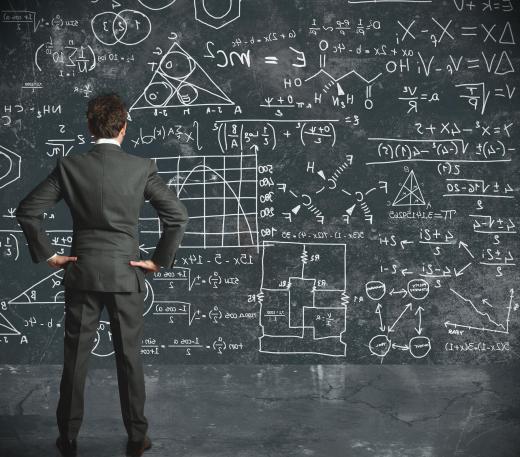At AllTheScience, we're committed to delivering accurate, trustworthy information. Our expert-authored content is rigorously fact-checked and sourced from credible authorities. Discover how we uphold the highest standards in providing you with reliable knowledge.
What is Quantum Electrodynamics (QED)?
Quantum electrodynamics (QED) is the quantum field theory explaining how electrically charged particles interact with each other through the exchange of photons (light "quanta", or little packets of light). Photons, and therefore interactions in a QED, propagate at the speed of light. QED is referred to as a gauge theory, with a mathematically specified gauge field representing the electromagnetic force. The theory also explains magnetism, as magnetism and electricity are two manifestations of the same underlying force, electromagnetism.
The theory of QED is one of the most well-verified theories on Earth, sometimes giving precise results to ten decimal places, and was the first quantum field theory to be called consistent and complete. One prediction made by QED was found to be accurate up to .0038 parts per million, probably the most precise and accurate physical prediction ever made. Computing correct solutions to the behavior of systems with interacting parts or larger electron orbitals gets exponentially harder as the number of components increases, with some calculations requiring literally decades of work to compute and verify.

Out of the four forces of nature — electromagnetism, weak nuclear force, strong nuclear force and gravity — electromagnetism is probably the easiest to explain rigorously, although explaining it fully took many hundreds of scientists decades of work. The theory was developed to satisfaction in the late forties, thanks to the independent work of Sin-Itiro Tomonaga, Julian Schwinger and Richard Feynman. They received the 1965 Nobel Prize in Physics for their effort.
If electromagnetism were the only force of nature operating in the universe, QED would offer a complete account of its exact nature. However, it isn't, and the search continues for a quantum field theory which integrates all four forces. Furthermore, solving equations in QED is very difficult, more difficult than conventional quantum mechanics problems, as QED is a generalization of quantum mechanics to special relativity. The images most famously associated with QED are Richard Feynman's Feynman diagrams, which use straight and squiggly lines to analyze the different ways in which particles exchange photons to interact physically.
The theory of QED still produces mathematical infinities in certain contexts, and while many of these problems have been resolved, they persist at a certain level. Ad hoc renormalization algorithms have been developed to smooth over these theoretical imperfections. These infinities suggest that QED is not by any means a final theory, leaving the future open to the discovery of a more accurate theory, one which views electromagnetism in the context of the other three forces of nature.
AS FEATURED ON:
AS FEATURED ON:











Discussion Comments
@NathanG - I actually think QED goes deeper than that. I don’t think it explains the light puzzle however. What I am more curious about is how electromagnetism relates to gravity. They seem to behave in similar manners.
Perhaps if scientists can somehow figure out how the two relate, then they can build an antigravity device. The way that I see it, gravity behaves like a magnet anyway.
If we can figure out a way to “reverse polarity,” then instead of gravity pulling things down, it would push things away, which would be the basis of the antigravity device. Perhaps only a unified field theory would lead us down this path however.
@everetra - Does QED explain away the old conundrum about how light can be a particle and a wave at the same time? That was one of the first mysteries I’ve ever read about light: it’s both a wave and a particle, and both of these classifications, supposedly, are contradictory.
Presumably scientists have no way of reconciling the two, but perhaps QED can explain it since it deals with photons of light? I don’t know if it can; I’m just throwing it out there.
@hamje32 - I too have a smidgeon of understanding in this subject. I’ve heard weird illustrations of how particles behave at the quantum level. One example is that particles can be connected to each other in some weird way, so that if one particle spins, the other particle spins with it, in the same direction.
I’ve even heard that particles behave differently if they are being “watched” by an outside observer like a scientist than if they are not being watched! That certainly makes no sense but it seems to be true.
I am certainly no expert in quantum physics, but I heard that Einstein spent the better part of his life in search of a unified field theory. He never succeeded obviously.
The little that I’ve heard and read about quantum mechanics is that it seems to operate in a manner differently than “regular” physics. In other words, what’s true in the quantum world isn’t necessarily true in the outer physical world.
This is one of the things that makes creating a unified “theory of everything” so hard to put together. I am sure, however, that eventually scientists will stumble upon it. It will just take some more time and research in the field of quantum mechanics.
Post your comments